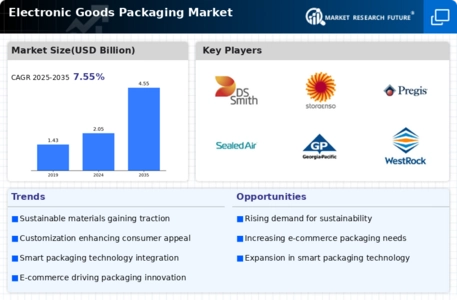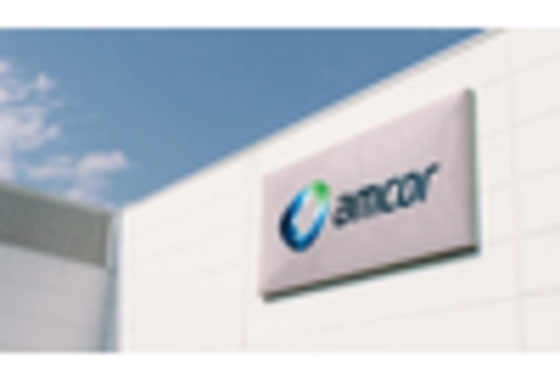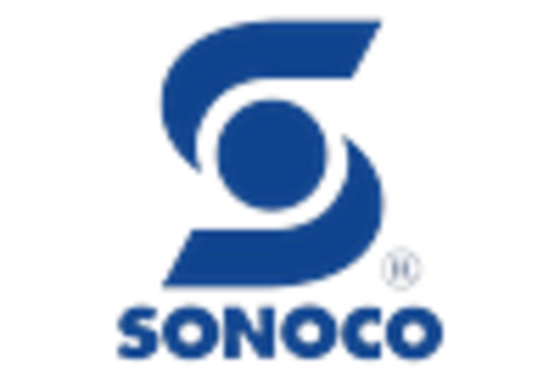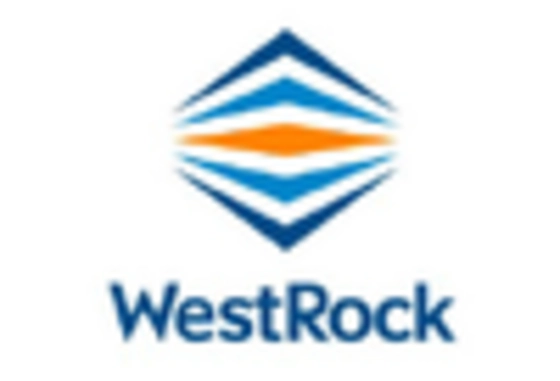Consumer Preferences
Shifting consumer preferences are significantly influencing the Electronic Goods Packaging Market. Today's consumers are increasingly discerning, seeking packaging that not only protects products but also aligns with their values and lifestyle choices. There is a growing demand for minimalistic and aesthetically pleasing packaging that enhances the overall product experience. Additionally, consumers are more inclined to support brands that prioritize transparency and sustainability in their packaging choices. Market Research Future indicates that nearly 70% of consumers are willing to pay a premium for products with sustainable packaging. This trend compels manufacturers to rethink their packaging strategies, focusing on design and functionality that resonate with modern consumers. As a result, the Electronic Goods Packaging Market is likely to see a shift towards more innovative and consumer-centric packaging solutions.
E-commerce Influence
The rapid expansion of e-commerce is reshaping the Electronic Goods Packaging Market, as online shopping continues to gain traction among consumers. This shift necessitates packaging solutions that not only protect products during transit but also enhance the unboxing experience for customers. Data suggests that e-commerce sales have surged, with projections indicating a growth rate of approximately 15% annually. Consequently, packaging must adapt to accommodate various shipping methods and ensure product integrity. The demand for innovative packaging designs that are lightweight yet durable is on the rise, as businesses seek to reduce shipping costs while maintaining product safety. This evolving landscape compels manufacturers within the Electronic Goods Packaging Market to develop packaging that meets the unique challenges posed by e-commerce logistics.
Regulatory Compliance
Regulatory compliance is becoming increasingly critical within the Electronic Goods Packaging Market. Governments and regulatory bodies are implementing stricter guidelines regarding packaging materials, labeling, and waste management. These regulations aim to reduce environmental impact and promote sustainable practices across industries. Companies are required to adapt their packaging strategies to comply with these regulations, which can involve significant changes in materials and processes. Failure to comply can result in penalties and damage to brand reputation. As a response, many businesses are proactively investing in research and development to create compliant packaging solutions that meet regulatory standards. This trend not only ensures legal compliance but also enhances brand credibility among environmentally conscious consumers. Consequently, the Electronic Goods Packaging Market is likely to experience a surge in demand for packaging solutions that adhere to evolving regulatory frameworks.
Sustainability Initiatives
The increasing emphasis on sustainability within the Electronic Goods Packaging Market is driving innovation and demand for eco-friendly packaging solutions. Companies are increasingly adopting biodegradable materials and recyclable packaging to meet consumer expectations and regulatory requirements. This shift is not merely a trend; it reflects a broader commitment to environmental responsibility. According to recent data, the market for sustainable packaging is projected to grow significantly, with a compound annual growth rate of over 10% in the coming years. This growth indicates a strong consumer preference for products that minimize environmental impact, thereby influencing manufacturers to invest in sustainable packaging technologies. As a result, the Electronic Goods Packaging Market is likely to witness a transformation in packaging materials and designs, aligning with global sustainability goals.
Technological Advancements
Technological advancements are playing a pivotal role in the evolution of the Electronic Goods Packaging Market. Innovations such as smart packaging, which incorporates sensors and QR codes, are enhancing the functionality of packaging solutions. These technologies not only improve product tracking and inventory management but also provide consumers with valuable information about the product. The integration of automation in packaging processes is also streamlining production, reducing costs, and increasing efficiency. As companies invest in these technologies, the market is expected to experience a shift towards more sophisticated packaging solutions. Furthermore, the rise of 3D printing technology is enabling customized packaging designs that cater to specific product requirements, thereby enhancing brand differentiation. This trend indicates a promising future for the Electronic Goods Packaging Market, as technology continues to drive innovation.

















Leave a Comment